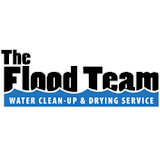Choose The Best In Water Damage Repair, Cleanup & Defense in St. Louis, MO
Water Cleanup, Drying, and Prevention For Your Home and Business in St. Louis, MO – 24/7

Guaranteed Clean, Dry, and Satisfied
Restoring Your Property with Expertise and Care
Water Clean-Up
Swiftly resolving household water disasters, sewer backups, floods, and more with precision and care.
"Insurance made easy"
Achieve peace of mind with The Flood Team. No out-of-pocket costs, direct billing to all carriers, hassle-free claims, and expert support.
Drain Cleaning / Hydro-Jetting
Clear stubborn blockages and debris from pipes with our powerful Hydro-Jetter, ensuring efficient flow and restoring plumbing systems effectively.
Commercial Water Damage
Minimize downtime and maximize recovery with our prompt response to commercial water damage.
Mold Inspection/Remediation
Our experienced professionals employ advanced techniques to detect mold, eliminating it at its source and ensuring a healthy, mold-free environment.
Flooded Basement
Our comprehensive process includes advanced water extraction techniques, effective mitigation, thorough cleaning and safe antimicrobial, and advanced drying system, we ensure a dry and clean basement, free from mold and other contaminants
Sewer Back-Up
Trust our IICRC certified professionals for the best-in-class sewage remediation process ensuring a thorough cleaning, disinfection, proper disposal, complete sanitization ensuring your property clean, dry and you are completely satisfied guaranteed.
Watch Us in Action
The Flood Team aims to protect people and their assets from water damage through its expertise, systems, and exceptional service.
Fastest ways to connect!
Meet “FloodBot” – our reliable AI assistant! This helpful companion will promptly connect you with our team for a faster response now!

The Flood Team’s experts are standing by for fast, convenient online assistance. Don’t wait, schedule an expert now!
Need help now? Contact The Flood Team today for expert assistance. Send us a quick message and let us assist you!
Ready for immediate help? Join The Flood Team’s live chat and connect with our expert to get your questions resolved now!
Best In Water Damage Defense!
-
Highly skilled specialists
Our team of experts handle all aspects of water damage, ensuring thorough assessment, mitigation, and restoration to protect your property.
-
Personalized approach
We understand that every person and water damage situation is unique, and we tailor our services to meet your specific needs, providing friendly exceptional service
-
Specialized Equipment
Equipped with specialized equipment that is ready to respond , we efficiently extract water, dry structures, and prevent mold growth and other dangerous contaminants ,protecting your health and safety.
-
Specialized Certifications
Our owner operators hold the prestigious IICRC ASD certification, demonstrating their expertise in applied structural drying, safeguarding you from any and all dangers of water damage
-
Insurance claims assistance
Our team provides comprehensive support with insurance claims, advocating for your financial protection and ensuring you receive the coverage you are entitled to, without adjuster denials
Stress-Free Claims Assistance
The Flood Team works with all insurance companies and is here to simplify the process for you, from start to finish. Here’s what sets us apart:
-
Expert Claims Assistance
Our experienced claims specialists will guide you through every step, providing personalized support and expert guidance
-
Effortless Documentation
With our user-friendly app, we can easily submit necessary documents, saving you time and eliminating paperwork
-
Streamlined Communication
We handle all communication with your insurance company, ensuring clear and efficient correspondence
-
Minimized Denials, Maximized Results
Our expertise minimizes claim denials, maximizing your chances of a successful outcome
-
Low Out-of-Pocket Costs
We strive to keep your expenses to a minimum, reducing your financial burden
Experience the ease of a stress-free claims process with The Flood Team.
What Our Customers Say


dawn guild
11 December 2023We had the best experience from this company for one of the worst situations we could find ourselves in. Jesse was great. Showed up promptly...

Ryan Alvey
15 November 2023We had a pipe break in our basement. A plumber referred us to The Flood Team and they were a pleasure/relief to work with. Shane came out and...

Dan Hanes
13 November 2023The flood team did a fantastic job cleaning up from a major flood in my home (due to a tree crashing through the roof during a big storm). They...

Beverly Smith
21 August 2023I think Donny Reader did a fantastic job of removing a root ball from my sewer line. He was efficient and courteous. It took awhile but he...

Sherry Salls
24 July 2023The Flood team was amazing! Dan made all of our worries and problems go away on that gloomy day along with a great team! They put Service...

Kimberly Reed
12 July 2023I am so glad I called The Flood Team. After the heavy rains, I discovered about 3 inches of water in my basement. Anthony and his team...

Richard Hund
11 July 2023When my basement flooded, I didn’t know where to turn— but thankfully Dan was able to come out very quickly to stay pumping out he water. But...

Lauren L
6 February 2023Jesse and the Flood Team were great! I called to have an estimate done and they came out right away. Great communication the entire time an...

Taylor Brengard
29 December 2022We had a pipe burst on Christmas Eve, Shane and his crew started cleanup on Christmas Day. While this was obviously not a fun experience, we...